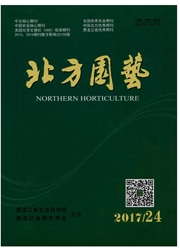

 中文摘要:
中文摘要:
利用2010~2011年陕西省、河南省2省5县297户果农的调查数据,应用价值链分析工具对2个省主要的苹果价值链的增值比例、成本构成及利润分配进行了总结。同时运用数据包络分析方法(DEA)对果农苹果生产阶段和销售阶段的技术效率加以测算,在此基础上运用Logit回归方法对影响农户选择交易对象的因素进行了实证检验。结果表明:处于苹果产业价值链底端的果农获益并不多,而果农与之交易的对象如超市、收购商等占有增值比例的大部分;农民合作社仍有较大的发展空间;且果农基本情况尤其是受教育程度对于农户选择交易对象的影响显著。
 英文摘要:
英文摘要:
The survey data of 297 farmers in Shaanxi Province and Henan Province from 2010 to 2011 were used toanalysis the added-value,the cost structure and profit distribution with value chain. The DEA was used to estimate the technical efficiency of production and sale stages,and Logit Regression was used to empirically test the factors that affectthe farmers to choose the transaction objects. The results showed that farmers didn't get the least benefit as the bottom part of the chain and the other objects get more proportion of the added-value,such as supermarkets. There was still a lotof room to develop the farmers' cooperatives. The farmers education level affected the farmers to select the transaction objects significantly.
 同期刊论文项目
同期刊论文项目
 同项目期刊论文
同项目期刊论文
 期刊信息
期刊信息
